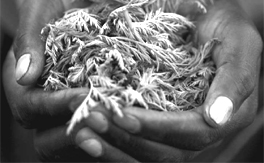Pricing forest carbon
Pricing forest carbon and putting in place the means and channels to pay for it are necessary conditions to achieve the 2030 mitigation goals. Yet, after more than 15 years of discussion, payments for
Pricing forest carbon and putting in place the means and channels to pay for it are necessary conditions to achieve the 2030 mitigation goals. Yet, after more than 15 years of discussion, payments for

<p>This new report by ETC group is a critique of what OECD countries are calling 'the new bioeconomy'. Analyzes impact of next generation biofuels, burning of biomass for electricity and also sets the new REDD+ provisions in this context.</p>
This report forms part of a project aiming to develop a South-South-North partnership to reshape the impact of a predicted large-scale expansion in global biomass energy use towards greater poverty reduction and maintenance of ecosystem services in developing countries. The consortium of partners represents leading biomass energy researchers from multiple disciplines.
TIMES VIEW Store it but after proper testing
For a country like India, which already depends on the imports of vegetable oil, we have to see another viable a novel alternative for bio-diesel production. This scenario changes dramatically if microalgae are used to produce bio-diesel.
<p>Charcoal is perhaps the best example of biochar. Considering the interest that has been generated by Jha et al. many readers would be interested in knowing how actually charcoal is made. During one of our recent field surveys to Kasera locality in Kangra District, Himachal Pradesh, (Correspondence)</p>
The world's forests are a key storehouse of carbon